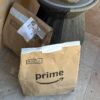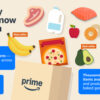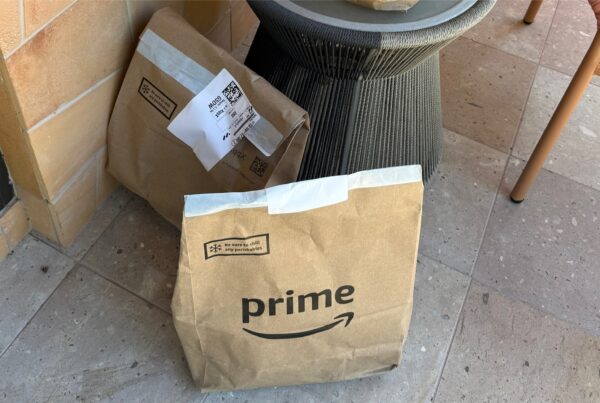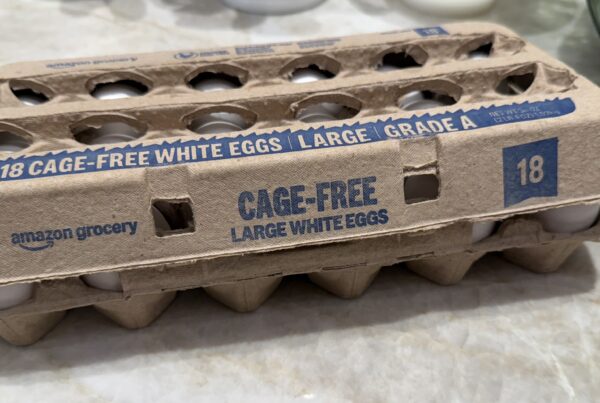August 21, 2025
Amazon unveiled a major expansion of its Same‑Day grocery delivery service. Before diving into the implications for retailers, consider some of the basic elements of the push and the thinking behind it.
In this new offering, fresh produce, dairy, meat, seafood, baked goods, and frozen items now qualify for Same‑Day Delivery, with Prime members getting free delivery on orders over $25 and paying just $2.99 for smaller orders. Non‑Prime customers will pay a flat fee of $12.99.
The goal here is to make the service even easier and more convenient. You don’t need a separate app or account. Shoppers place their orders using a single basket for perishables and everyday items. That’s important because shopping behavior in the grocery sector is highly habitual; you have to entice people to switch entrenched patterns and make it simple and easy for them to do so.
None of this erases the downsides of buying groceries online. To not be able to see or select produce before purchase can be a deal-breaker for some consumers. A botched first delivery–missing or damaged items, overripe fruits and vegetables, groceries left in the rain–can alienate a prospective customer for good.
The previous closures of Amazon Fresh and Go stores underscore some of the other challenges in grocery. These high-tech stores struggled to stand out and customers had to compete with in-store pickers. It wasn’t uncommon for pickers to clear the shelves before the first customer arrived when the store opened.
This time around, Amazon is aiming for more focused execution, leveraging its fulfillment centers and last-mile dominance.
Rather than repeating its physical retail mistakes, the company is doubling down on its core advantage: logistics, speed, and digital integration–boosting basket frequency and loyalty.
Amazon can win if it succeeds in embedding the service deeper into household routines. If grocery becomes part of a Prime order—like streaming or free shipping—it strengthens Amazon’s flywheel and increases share of wallet.
Jobs to be done
When shoppers choose where and how to shop for groceries, they’re solving three different problems:
- Convenience — “I want it fast, easy, and reliable.”
Historically, this meant the corner drug store or 7-Eleven; today it’s Instacart, Shipt, or curbside pickup. - Value — “I want the lowest price on my weekly shop.”
Think Walmart and Aldi. Price rules, loyalty is earned one receipt at a time. - Quality — “I want the best meat, produce, or bakery items, even if it costs more.”
Think Publix in the Southeast or Costco’s reputation for bulk freshness and curated standards.
While the American consumer is now accustomed to shopping in many different stores (and warehouses) for their grocery needs, they continue to gravitate toward fulfilling one of those jobs. Let’s consider the impact of Amazon same-day grocery delivery:
- Convenience Shoppers — Big Impact
Two decades ago, convenience meant a quick detour and a price premium. Today, it’s tapping an app and expecting doorstep service within hours. Amazon’s integration of fresh groceries into its Same-Day platform rewrites that expectation: convenience now means groceries arrive bundled in the same cart as your regular Amazon order. This will immediately pressure Shipt, Instacart, Kroger, DoorDash, and curbside pickup, because Amazon has stripped out the friction of a separate platform. - Value Shoppers — Moderate Impact
Prime households (roughly 4 out of 5 American households) paying $139 annually already justify the subscription with shipping and streaming. Adding fresh groceries to that mix makes Amazon’s offer more attractive on a total-value basis. Same-day grocery brings competitive pricing, but true “value” households will orient to the lowest cost first, and are more likely to be among the remaining non-Prime holdouts. - Quality Shoppers — Least Impact, Most Profit
For shoppers who equate quality with hand-selecting produce or trusting a retailer’s curation, Amazon remains an unknown. These customers are the most resistant to switching—and they’re the most profitable, since they’re willing to pay more for steaks, salmon, or heirloom tomatoes they can see and trust. That’s good news for Costco and Publix, with a reputation for quality that provides insulation from near-term disruption.
Amazon’s grocery impact will not be evenly distributed across the market. The near-term shakeout is in convenience. Expect rapid adoption among busy, Prime-loyal households. Value pressure will follow, but Walmart’s store density and price credibility still give it the upper hand. Quality remains the fortress. Retailers who win on quality—Costco with scale buying, Publix with service and fresh standards—are the most resilient.
Amazon has finally found a grocery model that aligns with what it does best. But by focusing on convenience, it’s also left space for value- and quality-oriented competitors to strengthen their positions.








